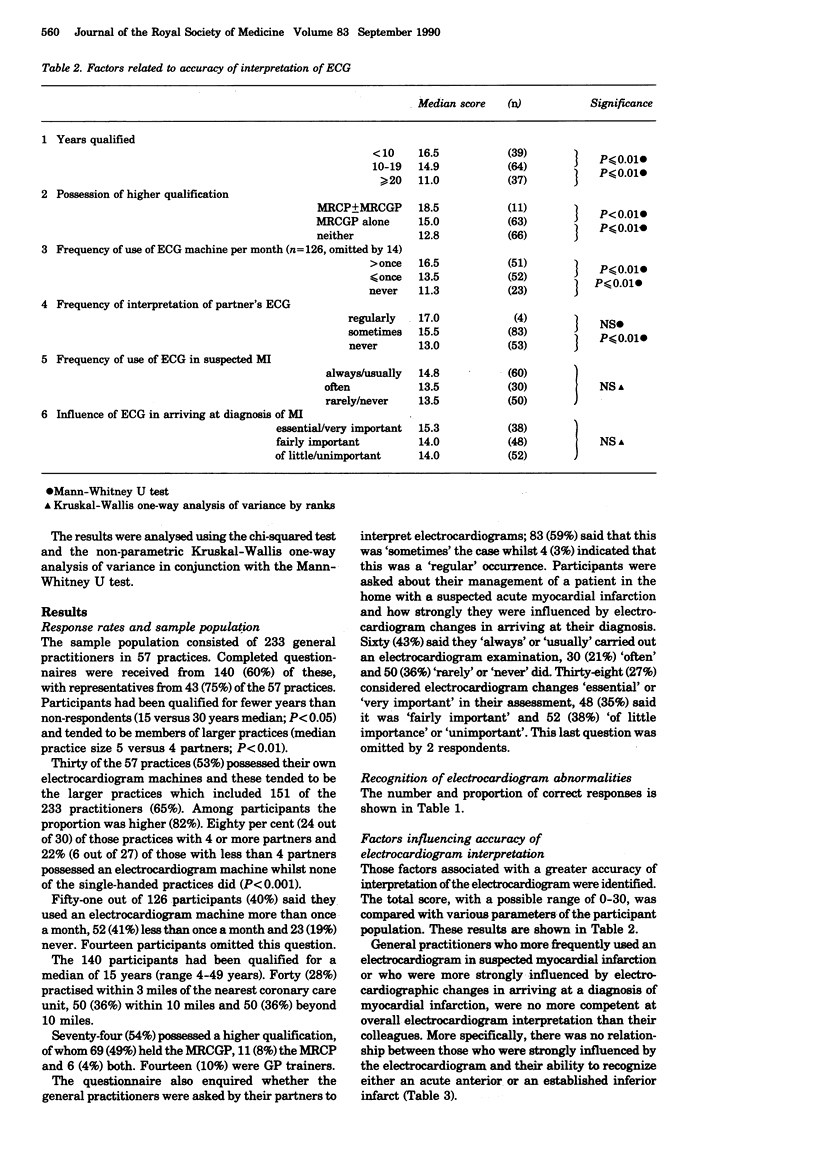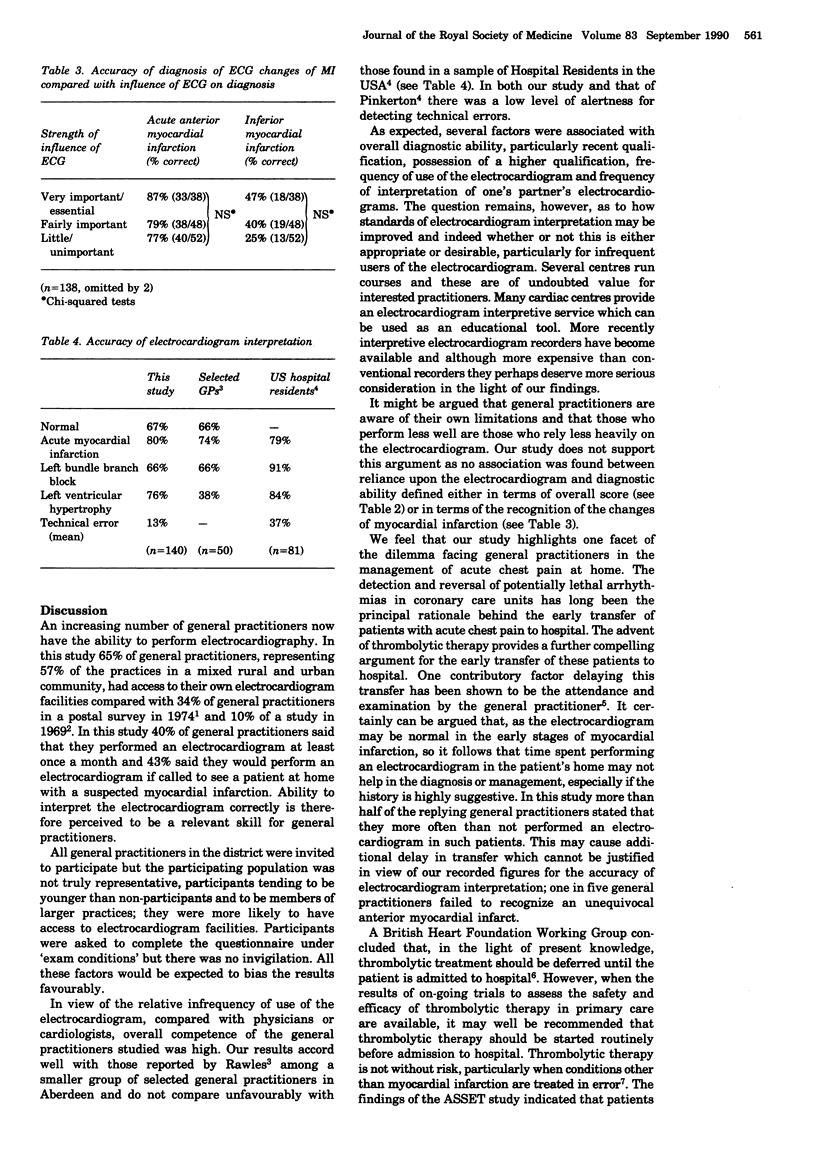Abstract
General practitioners in one health district were surveyed by postal questionnaire (including 15 sample electrocardiogram tracings) to assess their usage and competence in interpretation of the electrocardiogram. A response rate of 60% was achieved, of whom 40% said they used the electrocardiogram at least monthly and 43% used it 'always' or 'usually' in patients with suspected myocardial infarction at home. Overall competence in recognizing a variety of abnormalities was felt to be good. Recent qualification, the possession of a higher qualification (MRCP/MRCGP) and frequency of usage were associated with better performance. Even so, unequivocal acute myocardial infarction was misdiagnosed by 20% of respondents. These findings have implications for the provision of electrocardiographic services in primary care and the management of patients in the home with suspected myocardial infarction, particularly with the advent of thrombolytic therapy.
Full text
PDF



Selected References
These references are in PubMed. This may not be the complete list of references from this article.
- Bradford T. C. Community electrocardiography. J R Coll Gen Pract. 1975 Jun;25(155):445–450. [PMC free article] [PubMed] [Google Scholar]
- Colling A., Dellipiani A. W., Donaldson R. J., MacCormack P. Teesside coronary survey: an epidemiological study of acute attacks of myocardial infarction. Br Med J. 1976 Nov 13;2(6045):1169–1172. doi: 10.1136/bmj.2.6045.1169. [DOI] [PMC free article] [PubMed] [Google Scholar]
- Irvine D., Jeffreys M. B.M.A. Planning Unit survey of general practice 1969. Br Med J. 1971 Nov 27;4(5786):535–543. doi: 10.1136/bmj.4.5786.535. [DOI] [PMC free article] [PubMed] [Google Scholar]
- Petch M. C. Dangers of thrombolysis. BMJ. 1990 Feb 24;300(6723):483–484. doi: 10.1136/bmj.300.6723.483. [DOI] [PMC free article] [PubMed] [Google Scholar]
- Pinkerton R. E., Francis C. K., Ljungquist K. A., Howe G. W. Electrocardiographic training in primary care residency programs. JAMA. 1981 Jul 10;246(2):148–150. [PubMed] [Google Scholar]
- Rawles J. M. General practitioners' management of acute myocardial infarction and cardiac arrest: relevance to thrombolytic treatment. Br Med J (Clin Res Ed) 1987 Sep 12;295(6599):639–640. doi: 10.1136/bmj.295.6599.639. [DOI] [PMC free article] [PubMed] [Google Scholar]
- Wilcox R. G., von der Lippe G., Olsson C. G., Jensen G., Skene A. M., Hampton J. R. Trial of tissue plasminogen activator for mortality reduction in acute myocardial infarction. Anglo-Scandinavian Study of Early Thrombolysis (ASSET). Lancet. 1988 Sep 3;2(8610):525–530. doi: 10.1016/s0140-6736(88)92656-6. [DOI] [PubMed] [Google Scholar]


